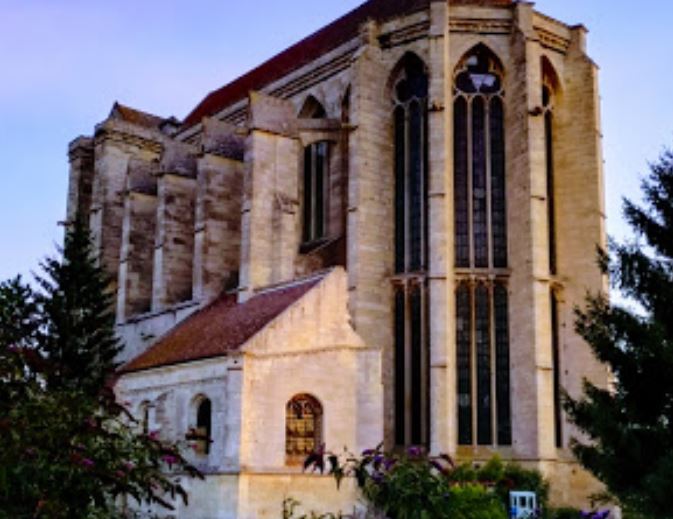L’abbaye Saint-Martin est appelée Saint-Martin-de-Ruricourt jusqu’à la fin du XIIIe siècle.
L’abbaye aurait été fondée par des moines qui suivaient la règle de saint Augustin. D’après la Gallia Christiana, ils étaient arrivés de l’abbaye Saint-Quentin-lès-Beauvais, mais cela est remis en cause par Christopher Henige de l’université du Wisconsin à Madison. Ainsi, les moines seraient indépendants d’ordre religieux. Le premier abbé, Hernand de Coivrel, est élu en 1080. Il ne reste rien de la première construction, hormis le Galata, un bâtiment au sud du cloître faisant office de réfectoire au XIIe siècle.
Maryse Bideault et Claudine Lautier date la construction de l’actuel édifice entre 1240 et 1260, date inscrite sur le vitrail à gauche du chevet.
Au XVIIe siècle, l’édifice devient jésuite jusqu’à l’expulsion de ces derniers en 1762. L’abbaye est supprimée à la Révolution française et finit comme carrière de pierre.
Il reste l’église abbatiale. Elle est classée aux Monuments historiques en 1840. PA00114868
The abbey of Saint-Martin was called Saint-Martin-de-Ruricourt until the end of the 13th century.
The abbey is said to have been founded by monks who followed the rule of Saint Augustine. According to the Gallia Christiana, they came from the abbey of Saint-Quentin-lès-Beauvais, but this is questioned by Christopher Henige of the University of Wisconsin in Madison. Thus, the monks would be independent of the religious order. The first abbot, Hernand de Coivrel, was elected in 1080. Nothing remains of the first construction, except for the Galata, a building to the south of the cloister which served as a refectory in the 12th century.
Maryse Bideault and Claudine Lautier date the construction of the present building to between 1240 and 1260, the date inscribed on the stained glass window to the left of the chevet.
In the 17th century, the building became Jesuit until the expulsion of the Jesuits in 1762. The abbey was abolished during the French Revolution and ended up as a stone quarry.
The abbey church remains. It was listed as a historical monument in 1840. PA00114868

 "/>
"/>